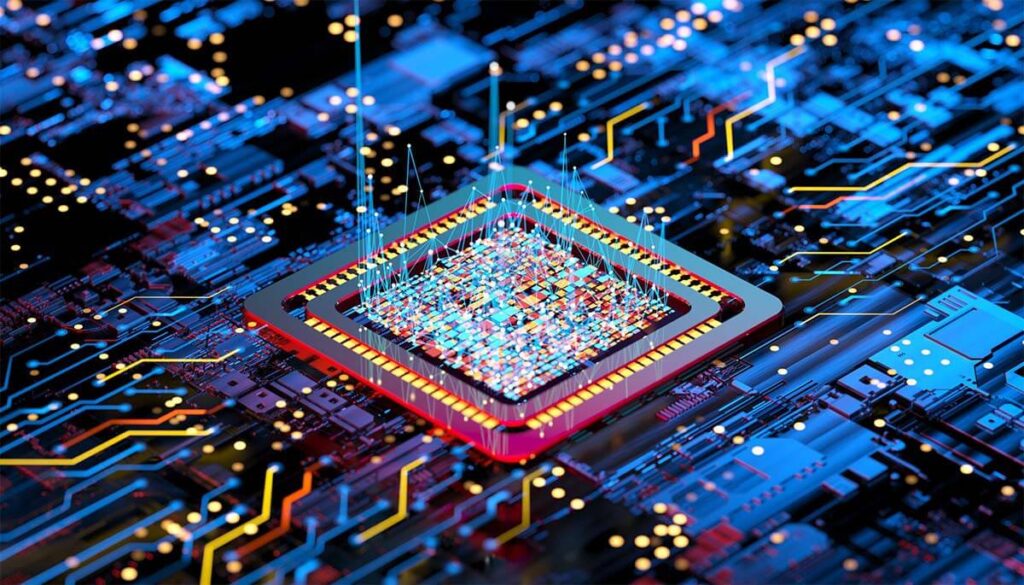
Reduce Signal Interference with High K Dielectric Materials
Signal interference is a common challenge in high-tech applications. It can disrupt the smooth functioning of devices and systems, causing headaches for engineers and end-users alike. Whether it’s a smartphone, a satellite, or a complex industrial machine, interference can wreak havoc on electronic signals, leading to poor performance or even device failure. Understanding how to mitigate and resolve these issues is critical for maintaining the efficiency and reliability of electronic systems.
One powerful tool in combating signal interference lies in the materials used within these devices. High K dielectric materials have emerged as a crucial component in minimizing signal noise and enhancing performance. By using the right materials, you can effectively reduce interference and improve the overall functioning of electronic systems. Let’s explore what signal interference is and how high K dielectric materials can be your secret weapon in solving these problems.
Understanding Signal Interference
Signal interference is when unwanted signals disrupt the operation of electronic components. These disruptions can lead to a range of problems, from minor glitches to complete system failures. Interference might come from various sources, such as electromagnetic fields, overlapping frequencies, or even physical obstructions within a device.
Several industries regularly grapple with interference issues. For example, in the aerospace sector, signal interference can affect communication systems on aircraft, posing safety risks. In the realm of electronic manufacturing, interference might lead to defective products or reduced efficiency in assembly lines. Recognizing these interference sources is the first step in tackling the problem effectively.
Here are some common causes of signal interference:
– Electromagnetic Interference (EMI): Generated by devices like microwave ovens or power tools, EMI can create unwanted noise in electronic systems.
– Radio Frequency Interference (RFI): Occurs when radio waves interrupt the signals of electronic devices.
– Physical Barriers: Objects or materials that block or weaken signal transmission, such as walls or bulkheads.
Understanding the origins and impacts of interference allows for more targeted solutions. This is where high K dielectric materials, known for their excellent insulating properties and ability to handle high voltages, come into play. These materials are designed to combat these interference sources effectively, ensuring that electronic devices operate smoothly without unexpected disruptions.
With an awareness of these challenges, we can delve into how high K dielectric materials not only address these issues but also optimize electronic performance. We’ll look at what makes these materials stand out and why they are a smart choice for overcoming interference in various settings.
High K Dielectric Materials: An Overview
High K dielectric materials are a type of insulating material known for their ability to store electrical energy in a more compact form. These materials have a high dielectric constant, which makes them efficient at reducing signal loss in electronic circuits. By effectively insulating and governing the flow of electrical charges, they provide a stable environment that reduces interference, thus enhancing device performance.
Unlike standard dielectrics, which might not handle high voltages as effectively, high K dielectrics are built to withstand greater electrical demands. This characteristic makes them a preferred choice in applications where reliability under stress is a must. For example, while traditional materials may falter in extreme conditions, high K dielectrics excel in maintaining integrity, which is why you often find them in aerospace or high-frequency electronics.
The advantages don’t stop there. These materials also allow for the miniaturization of devices, contributing to the ever-growing demand for compact, yet powerful, electronic gadgets. By integrating high K dielectric materials, engineers can design devices that are not only smaller but also superior in performance and stability.
Solving Signal Interference with High K Dielectrics
So, how exactly do these materials tackle signal interference? The key lies in their impressive insulating properties. High K dielectric materials create a barrier that prevents interference from passing through, essentially providing a clean path for signals. They can isolate different parts of a system, minimizing crosstalk and noise, which are common culprits in interference-related issues.
Consider an aircraft’s sensitive communication systems. Signal interference can disrupt the clear transmission of data, posing a potential risk. High K dielectrics used in the insulation of these systems help ensure that interference is kept to a minimum, maintaining clear communication channels. This is just one of countless scenarios where these materials prove their worth.
Advantages of Using High K Dielectric Materials
Switching to high K dielectric materials offers several benefits:
– Enhanced Device Performance: Systems experience less signal loss, so electronic devices can perform more reliably.
– Greater Longevity and Durability: By preventing degradation due to interference, components benefit from a longer service life.
– Industry-Specific Benefits: Whether in aerospace, motors, or flexible circuits, these materials contribute to more efficient and reliable operations.
By utilizing the appropriate insulating materials, industries can significantly cut down on interference issues, leading to smoother operations and longer-lasting equipment.
Improve Signal Reliability with High K Dielectric Materials from APICAL®
There’s no doubt that addressing signal interference with high K dielectric materials is a wise move for anyone looking to enhance the performance of electronic systems. The ability of these materials to reduce noise and ensure stable operations makes them a go-to choice for modern technology. They not only provide the capability to handle advanced electronic applications but also ensure that devices operate at their optimal levels with minimal disruptions.
Whether you’re involved in aerospace, automotive electronics, or any field reliant on precision engineering, considering the integration of high K dielectrics could make a world of difference. These materials offer a robust solution to some of the most challenging interference problems, ensuring that systems work as intended, free from the disturbances of unwanted signals.
To ensure your electronic systems thrive in challenging environments, explore the capabilities of high K dielectric materials with APICAL® Polyimide Film. Discover how these innovative solutions can enhance performance across various industries by reducing interference and boosting system efficiency.
